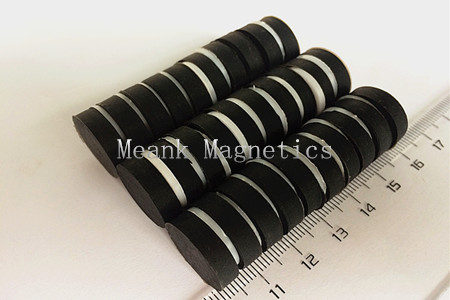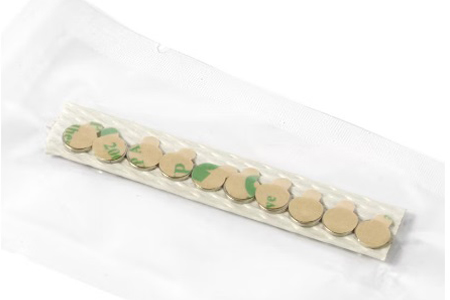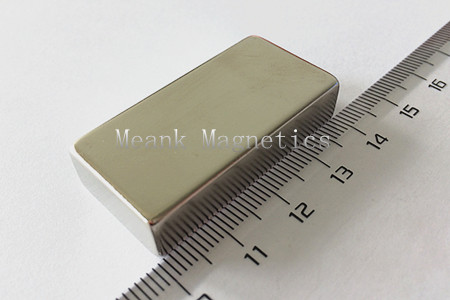Bonded NdFeB is made of permanent magnet powder mixed with bonding materials such as rubber or light-weight plastics, and directly molded into permanent magnet parts of various shapes according to user requirements.
The preparation of magnetic powder is a key process for processing neodymium iron boron permanent magnets. The performance of the magnetic powder directly affects the permanent magnet strength. The methods of preparing Nd-Fe-B magnetic powder include mechanical crushing method, frit rapid quenching method, HDDR method, gas spraying method and mechanical alloying method. At present, the mainstream process adopts the HDDR method, which prepares high-performance rare earth permanent magnet powder through the process of hydrogenation-decomposition-dehydrogenation-recombination: first, the alloy is crushed into coarse powder, put into a vacuum furnace, and crystallized at a certain temperature. The alloy absorbs hydrogen and undergoes a disproportionation reaction, and then the hydrogen is pumped out so that the alloy can be reconstituted into rare earth permanent magnet powder with extremely small crystal grains. This method can obtain fine crystal grains with an average particle size of 0.3 μm, thereby obtaining magnetic powders with high coercivity.
There are currently 4 processes for press molding of bonded NdFeB: calender molding, injection molding, extrusion molding and compression molding, of which calendering and injection are more mainstream.
Ⅰ. Calendering
Calendering is to mix magnetic powder and binder uniformly according to a certain volume ratio, and then to roll the mixture to the required thickness and then cure to make a finished product. Generally, vinyl resin and nitrile rubber are used as the binder, and the surface of the product needs to be coated for protection.
Ⅱ. Injection molding
Injection molding of bonded NdFeB is to mix magnetic powder with a binder (thermoplastic resin), mix by heating, granulate, dry, then send it to a heating chamber through a spiral guide rod for heating, and inject it into a mold cavity at a certain speed for molding. The product is finished after being cooled. Due to the high resin content, it can form a protective film on the surface of the magnet. Generally, there is no need for surface anti-corrosion treatment unless there is a higher requirement for the surface anti-corrosion ability.
Ⅲ. Extrusion molding
Extrusion molding is basically the same as injection molding, the only difference is that the heated pellets are extruded into the mold through a cavity for continuous molding.
Ⅳ. Compression molding
Compression molding is to mix the magnetic powder and the binder according to the proportion, press the mixture into a mold in the mold after granulating and adding a certain amount of coupling agent, and solidify the mixture at 120-150°C to finally obtain the finished product.




